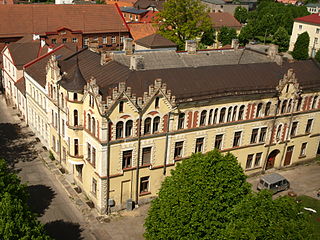 W
WA historic district or heritage district is a section of a city which contains older buildings considered valuable for historical or architectural reasons. In some countries or jurisdictions, historic districts receive legal protection from certain types of development considered to be inappropriate.
 W
WAltstadt is the German language word for "old town", and generally refers to the historical town or city centre within the old town or city wall, in contrast to younger suburbs outside. Neustadt, the logical opposite of Altstadt, mostly stands for a part of the "Altstadt" in modern sense, sometimes only a few years younger than the oldest part, e. g. a late medieval enlargement.
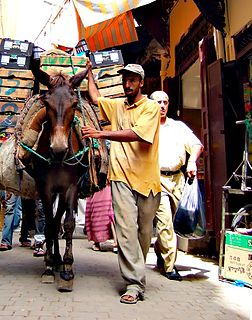 W
WA medina quarter is a distinct historical city section found in a number of North African cities, and in Malta. A medina is typically walled, with many narrow and maze-like streets. The word "medina" itself simply means "city" or "town" in modern-day Arabic. It is cognate with the Aramaic-Hebrew word referring to a city or populated area.
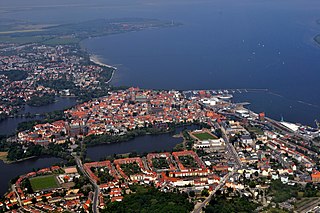 W
WIn a city or town, the old town is its historic or original core. Although the city is usually larger in its present form, many cities have redesignated this part of the city to commemorate its origins after thorough renovations. There are many places throughout the world referred to as the old town. This is a list of some famous old towns:
 W
WAncient Chernihiv is the National Architecture-Historical Sanctuary located in the north-eastern Ukrainian city of Chernihiv. It was created at first as an affiliate of the National Sanctuary "Sophia of Kyiv". Since August 1, 1967, the site is a separate entity consisting of 34 monuments of architecture.
 W
WBadagry also spelled Badagri, is a coastal town and Local Government Area (LGA) in Lagos State, Nigeria. It is quite close to the city of Lagos, and located on the north bank of Porto Novo Creek, an inland waterway that connects Lagos to the Beninese capital of (Porto-Novo). The same route connects Lagos, Ilaro, and Porto-Novo, and shares a border with the Republic of Benin. As of the preliminary 2006 census results, the municipality had a population of 241,093.
 W
WBarrio de San Lázaro is one of the first neighbourhoods in Havana, Cuba. It initially occupied the area bounded by Calle Infanta to the west, Calle Zanja to the south, Calle Belascoáin to the east, and the Gulf of Mexico to the north, forming the western edge of Centro Habana. According to the 1855 Ordenanzas Municipales of the city of Havana, Barrio San Lázaro was the Tercer Distrito and was Barrio No. 8.
 W
WIn the esplanade that today occupies the Antonio Maceopark, directly in gront in front of the La Casa de Beneficencia y Maternidad de La Habana orphanage and the Hospital de San Lázaro, opposite Marcos Lucio's Torreón de San Lázaro and next to the Caleta de San Lazaro, built between 1856 y 1861, was a colonial military defense fortress that had accommodations for a garrison of 250 men and 44 pieces of artillery.
 W
WArcabuco was the name of a footpath starting in Old Havana, in the vicinity of the church of Loma del Ángel, and ran in a westerly direction to an inlet cove of approximately 93 metres (305 ft) wide and 5.5 metres (18 ft) in depth. When Juan Guillén a Spanish soldier installed a carpentry shop to build small boats close to the cove the site became known as “La Caleta de Juan Guillén”, the road was known as “the caleta”. Eventually the Hospital de San Lázaro, the Espada Cemetery, the San Dionisio mental asylum, and La Casa de Beneficencia were developed in close proximity to the Caleta de San Lazaro.
 W
WCasco Viejo, also known as Casco Antiguo or San Felipe, is the historic district of Panama City. Completed and settled in 1673, it was built following the near-total destruction of the original Panamá city, Panamá Viejo in 1671, when the latter was attacked by pirates. It was designated a World Heritage Site in 1997.
 W
WCentro Storico is the first urban zone of Rome, identified by the initials 1A. It belongs to the Municipio I and it includes the main part of the city center.
 W
WThe Cercado de Lima, Damero de Pizarro, or Lima Cuadrada is an area of the historic center of Lima located within the old walls of the city.
 W
WThe Historic Centre of Cienfuegos, is located in the city of Cienfuegos in Cuba. It was declared a UNESCO World Heritage Site in 2005, because of its outstanding Neoclassical architecture architecture and its status as the best example of early 19th century Spanish urban planning. The historic centre contains six buildings from 1819–50, 327 buildings from 1851–1900, and 1188 buildings from the 20th century.
 W
WCiudad Colonial is the historic central neighborhood of the Dominican Republic's capital Santo Domingo. It is the oldest continuously inhabited European-established settlement in the Americas. The area has been declared a World Heritage Site by UNESCO. It is also known as Zona Colonial or more colloquially as "La Zona".
 W
WThe historic centre of Córdoba, Spain is one of the largest of its kind in Europe. In 1984, UNESCO registered the Mosque–Cathedral of Córdoba as a World Heritage Site. A decade later, it expanded the inscription to include much of the old town. The historic centre has a wealth of monuments preserving large traces of Roman, Arabic, and Christian times.
 W
WGberefu Island also known as Point of No Return is a populated historical island located in Badagry, a town and local government area of Lagos State, South-Western Nigeria. Symbolized by two poles slightly slanted towards each other and facing the Atlantic Ocean, the island was a major slave port after it was opened in 1473 during the Trans Atlantic Slave Trade era. According to Nigerian historians, as many as 10,000 slaves were believed to have been shipped to the Americas between 1518 and 1880 from the island.
 W
WThere is an abandoned Jai alai court in the back of the Hermanos Ameijeiras Hospital, the site of the old Casa de Beneficencia, on Calles Concordia and Lucenas near Calle Belascoain, an area that had been considered in the early part of the city as a place to locate the helpless and the unwanted, it was the edge between the city and the countryside; the spectator stands were parallel to Calle Concordia, the front wall of the court faced Calle Lucenas, East in the direction towards Old Havana. The original building has been annexed by five stories of residential concrete construction on the Northside along Calle Virtudes. The Havana Jai alai fronton was known as "the palace of screams".
 W
WThe Havana Plan Piloto was a 1955–1958 urban proposal by Town Planning Associates, which included Paul Lester Wiener, Paul Schulz, the Catalan architect Josep Lluis Sert, and Seely Stevenson of Value & Knecht, Consulting Engineers, seeking to combine "architecture, planning, and law", in a project heavily influenced by the politics of Fulgencio Batista which in turn were dictated by his involvement with the American Mafia and their desire to augment United States tourism, and thru his architects and various designers, the modernist principles of the Congrès Internationaux d'Architecture Moderne (CIAM) and the Athens Charter. The Charter got its name from the location of the fourth CIAM conference in 1933, which, due to the deteriorating political situation in Russia, took place on the in SS Patris II bound for Athens from Marseilles. This conference is documented in a film commissioned by Sigfried Giedion and made by his friend László Moholy-Nagy "Architects' Congress". The Charter had a significant impact on urban planning after World War II and, thru Josep Lluis Sert and Paul Lester Wiener, on the proposed modernization of Havana and in an effort to erase all vestiges of the 16th-century city.
 W
WHavana Tunnel is a route under the Havana Bay, built by the French company Societé de Grand Travaux de Marseille between 1957-58. The president of the Republic Fulgencio Batista planned to expand the city to Habana del Este by building a new suburb with large avenues and luxury buildings, and a new connection between Havana Vieja and the east side across Havana Bay was required.
 W
WThe Historic Center (US) or Centre of Salvador de Bahia in Brazil, also known as the Pelourinho or Pelo, is a historic neighborhood in western Salvador, Bahia. It was the city's center during the Portuguese colonial period and was named for the whipping post in its central plaza where enslaved people from Africa were publicly beaten as punishment for alleged infractions. The Historic Center is extremely rich in historical monuments dating from the 17th through the 19th centuries.
 W
WThe historic centre of Florence is part of quartiere 1 of the Italian city of Florence. This quarter was named a World Heritage Site by UNESCO in 1982.
 W
WLocated principally in the city centre or Cercado de Lima and Rímac areas, the Historic Centre of Lima is among the most important tourist destinations in Peru.
 W
WThe historic center of Naples represents the first historical nucleus of the city. It contains 27 centuries of history.
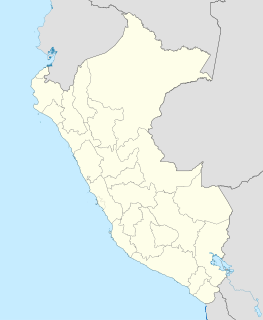 W
WThe Historic Centre of Trujillo is the main urban area and the most important center of development and unfolding in the Peruvian city of Trujillo located in La Libertad Region. The whole process of its original urban fabric is in elliptical shape surrounded by España Avenue that was built in the wake of the Wall of Trujillo. It houses the seat of city government and other important entities in the locality. In the center of this historic urban area is the Plaza de Armas of Trujillo that was the scene of the Spanish founded of the city in 1534 and the proclamation of the independence of Trujillo on December 29, 1820.
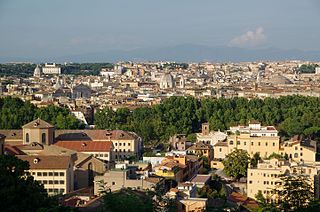 W
WThe historic district of Rome was declared World Heritage Site by the United Nations Educational, Scientific and Cultural Organization in 1980. It covers 19,91 km² and is included in 22 rioni with 186.802 inhabitants. There are 25.000 importants archaeological sites and locations.
 W
WHyderabad is the capital and largest city of the Indian state of Telangana and the de jure capital of Andhra Pradesh. It occupies 650 km2 (250 sq mi) on the Deccan Plateau along the banks of the Musi River, in the northern part of South India. With an average altitude of 542 m (1,778 ft), much of Hyderabad is situated on hilly terrain around artificial lakes, including the Hussain Sagar lake, predating the city's founding, in the north of the city centre. According to the 2011 Census of India, Hyderabad is the fourth-most populous city in India with a population of 6.9 million residents within the city limits, and has a population of 9.7 million residents in the metropolitan region, making it the sixth-most populous metropolitan area in India. With an output of US$74 billion, Hyderabad has the fifth-largest urban economy in India.
 W
WThe Innere Stadt is the 1st municipal District of Vienna located in the center of the Austrian capital. The Innere Stadt is the old town of Vienna. Until the city boundaries were expanded in 1850, the Innere Stadt was congruent with the city of Vienna. Traditionally it was divided into four quarters, which were designated after important town gates: Stubenviertel (northeast), Kärntner Viertel (southeast), Widmerviertel (southwest), Schottenviertel (northwest).
 W
WLadadika is the name of a historic district and a landmark area of the city of Thessaloniki, Greece.
 W
WThe historic center of Mexico City, also known as the Centro or Centro Histórico, is the central neighborhood in Mexico City, Mexico, focused on Zócalo or main plaza and extending in all directions for a number of blocks, with its farthest extent being west to the Alameda Central. The Zocalo is the largest plaza in Latin America. It can hold up to nearly 100,000 people.
 W
WThe Neumarkt in Dresden is a central and culturally significant section of central Dresden, Germany. The historic area was almost completely wiped out during the Allied bomb attack during the Second World War. After the war Dresden fell under Soviet occupation and later the communist German Democratic Republic which rebuilt the Neumarkt area in socialist realist style and partially with historic buildings. However huge areas and parcels of the place remained untilled. After the fall of Communism and German reunification the decision was made to restore the Neumarkt to its pre-war look.
 W
WOld Cairo is a historic area in Cairo, Egypt, which includes the site of a Roman-era fortress and of Islamic-era settlements pre-dating the founding of Cairo proper in AD 969. It is also considered part of what is referred to as "Historic Cairo" or "Islamic Cairo", and is a UNESCO World Heritage Site.
 W
WThe Old City is a 0.9-square-kilometer (0.35 sq mi) walled area within the modern city of Jerusalem.
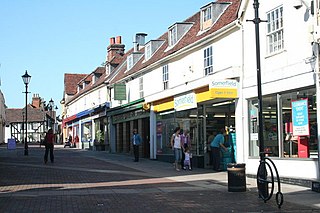 W
WOld Harlow is the historic part of the new town and district of Harlow, Essex in England.
 W
WOld Havana is the city-center (downtown) and one of the 15 municipalities forming Havana, Cuba. It has the second highest population density in the city and contains the core of the original city of Havana. The positions of the original Havana city walls are the modern boundaries of Old Havana.
 W
WThe historic "Tacita de Oro" of the Atlantic Coasts. The Old Quarters of Colon are under renovation and reconstruction.
 W
WLviv's Old Town is the historic centre of the city of Lviv, within the Lviv Oblast (province) in Ukraine, recognized as a State Historic-Architectural Sanctuary in 1975.
 W
WThe old town in Plovdiv is an architectural and historical reserve located on three of Plovdiv's hills: Nebet Tepe, Dzhambaz Tepe and Taksim Tepe.
 W
WOlinda is a historic city in Pernambuco, Brazil, in the Northeast Region. It is located on the country's northeastern Atlantic Ocean coast, in the Metropolitan Region of Recife, the state capital. It has a population of 393,115 people, covers 41.681 square kilometres (16.093 sq mi), and has a population density of 9,437 inhabitants per square kilometer. It is noted as one of the best-preserved colonial cities in Brazil, and has been inhabited since 1535.
 W
WThe Paseo de Tacón, or Paseo Militar, was created by the Captain General Miguel Tacón y Rosique (1834–1838) who promoted the reform of the “road” that, starting from the calles of San Luis de Gonzaga (Reina) and Belascoáin, connected to the Castillo del Príncipe. Calle Belascoáin was the edge between the city and the countryside.
 W
WPaseo del Siglo is a part of the historical center of the city of Rosario, Argentina. It comprises eight blocks in the downtown Córdoba Street, from Oroño Boulevard east up to Paraguay Street. This segment and the adjacent streets showcase a number of historical buildings, from public and private institutions to former mansions of wealthy families. These have been preserved or restored under the sponsorship of a municipal preservation program.
 W
WThe Quinta de Los Molinos is more than two centuries old and a national monument, an oasis in the heart of the city located at the intersection of one of Havana’s heaviest traffic arteries: Infanta, Carlos III, and Boyeros avenues. The Quinta since colonial times has had a complicated history to various events and characters, mainly with General Máximo Gómez.
 W
WRecife Antigo is the historical section of central Recife, Brazil. It is located on the Island of Recife, near the Recife harbor. This historic area has been recently recovered and now holds several clubs, bars and a high-tech center called Porto Digital.
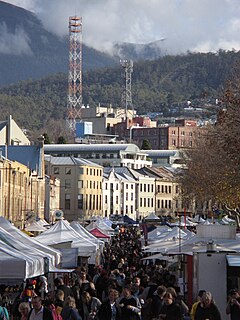 W
WSalamanca Place is a precinct of Hobart, the capital city of the Australian state of Tasmania.
 W
WThe Sans Souci was a nightclub within a natural environment and located in the outskirts seven miles outside of Havana. It had a restaurant and floor shows nightly that attracted a great number of tourists. Its greatest profits came from an amusement arcade operating located in a small room next door to the Sans Souci that was not advertised since there was no official license for its exploitation.
 W
WSovetsky is a historic district in Baku, Azerbaijan. It is located in Yasamal raion, between Nariman Narimanov Avenue and Mirza Ibrahimov Street, and between Nizami and Ibrahim Abilov streets. There are many historical buildings over a century old, museums, mosques, baths and houses of notable Azerbaijanis.
 W
WSullivans Cove is on the River Derwent adjacent to the Hobart CBD in Tasmania.
 W
WThe torreón is a cylinder, a round tower of masonry. El Torreón de San Lázaro, built on the shore of what was once the Caleta de San Lazaro or Juan Guillén, possibly at the end of the 17th century or the beginning of the 18th century as a day and night watchtower to warn the population and the guardians of the fortresses and walls of the presence of enemy ships.The Torreón de San Lázaro is approximately 4.57 metres (15.0 ft) in diameter and 9.14 metres (30.0 ft) high with embrasures along its wall at the intermediate level and a battlement parapet at the third level roof. It has a wooden entry door at ground level. With the passage of time, the San Lazaro cove was filled and the tower was included in a Republican-era park named after Major General Antonio Maceo. In an 1853 map of Havana it is shown as the Torreón de Vijias (lookouts). In 1982, the Torreón was inscribed along with other historic sites in Old Havana on the UNESCO World Heritage List, because of the city's importance in the European conquest of the New World and its unique architecture.
 W
WThessaloniki's Upper Town called Ano Poli is the old town of Thessaloniki and is located around the city's acropolis north of the city center. The neighborhood is known for its well preserved Byzantine and Ottoman era structures and urban design and as a center for Thessaloniki's poets, intellectuals, and bohemians.